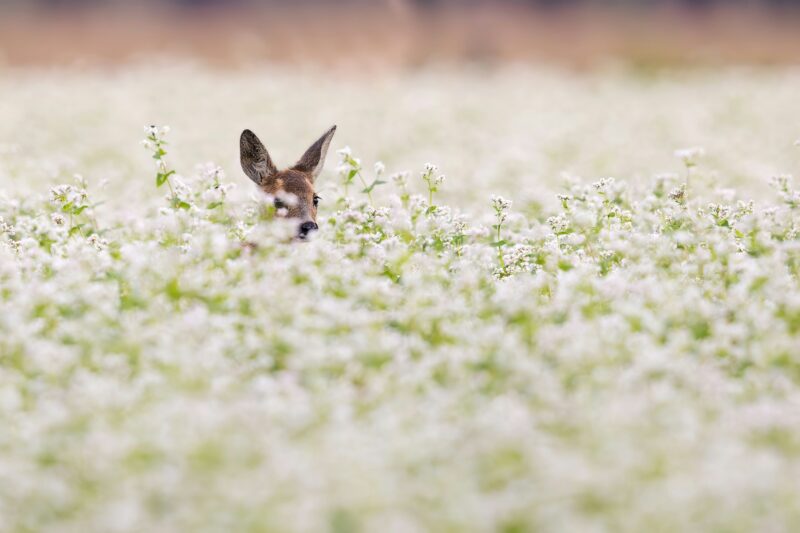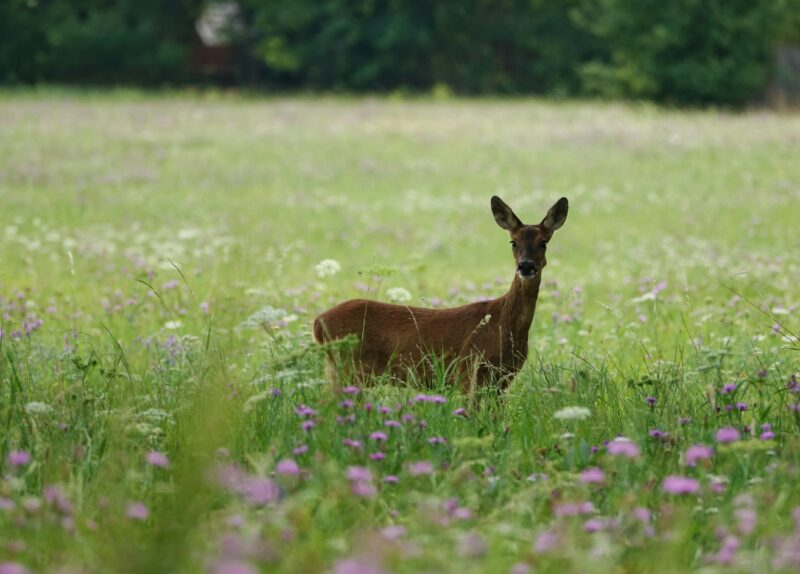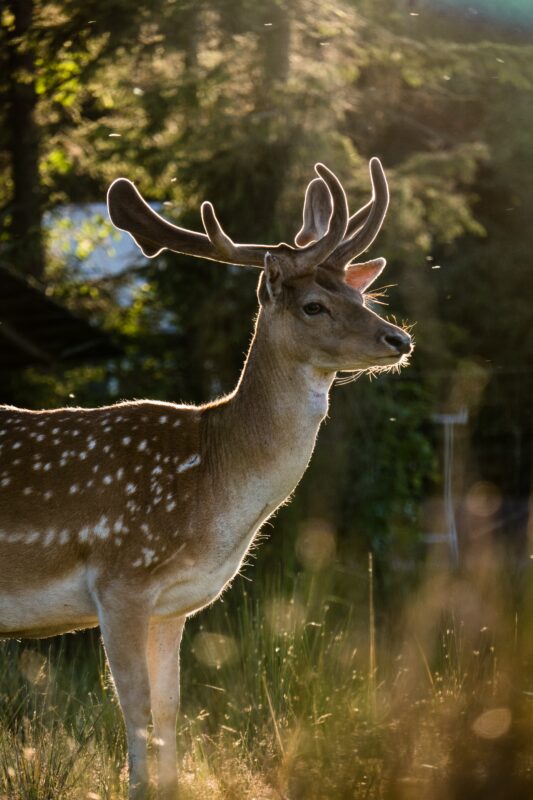Protecting Plants from Deer.

The Mild Winter Affect.
Altogether the mild winter this year gave way to an exploding mammal population in spring. Undoubtedly there are more chipmunks, squirrels, rabbits, woodchucks, skunks and deer than normal. A seasonally typical year results in some natural checks and balances to wildlife populations. Conversely, a snowstorm absent winter removes many such checks and balances.
More competition for food means plants considered deer safe may not be for a while.
Given the increased deer population, this year plants normally considered “safe” from deer are not necessarily safe. This is not automatically a permanent situation for these plants. Certainly, nature’s checks and balances will kick back in eventually. And wildlife populations are always on the move. Especially when humans are using their agency and interrupting the animals’ easy comfortable access to the property, the process of wildlife moving on can be expediated. If a garden is no longer interpreted as “low hanging fruit,” then your problem wildlife will consider moving on much more readily.
Of course, selecting deer resistant plants, shrubs and trees is your first and best line of defense. (On the positive side, if you hired Jessecology Eco-Landscaping to design and install your gardens/landscaping, the most deer proof species were automatically chosen already!)
Here are some strategies you might consider implementing that will offer plant protection from deer. As has been noted, homeowners play an active role participating in the nature of their home world. The strategies recommended here will empower you to defend your investment in the ecosystem. Indeed, wildlife is always in motion. Using these tactics will encourage the deer on your land to seek an alternate route faster than they would have.
7 Suggestions for protecting plants from deer. Or:
“How to Protect Plants from Deer.”
- Temporary Fencing or Netting: Temporary fencing or netting around particularly vulnerable new plants is significantly strategic. This often makes all the difference in the world.
- Repellents: Applying deer repellents on a regular basis certainly helps new shrubs and perennials to get established. These can certainly be natural and organic. Above all repellents will need to be reapplied periodically, especially after rain. (Liquid Fence works well. Use as directed.)
- Community Teamwork: In light of the nature of deer overpopulation and the resulting chaos, neighborhood collaboration can be especially helpful. Straightaway- meet up with your neighbors. Overall, the resulting cooperation may be surprisingly effective.
- Stewardship Program Support: Jessecology Stewardship Program membership for qualified design/build customers often involves deer protection support. You want help with implementing deer protection? Sign up for the Stewardship Program. We’d love to help you!
- Barrier Plants: Evidently, thorny or unpalatable plants around more vulnerable species act as a natural barrier against deer. Basically, one approach is to plant a baffle of aromatic herbs next to your shrubs.
- Motion-Activated Devices: Motion-activated sprinklers or lights particularly help deter deer from entering gardens.
- Re-direction. Sometimes allocating a space on your property specifically for deer to browse is a surprisingly effective strategy. You can strategically cultivate many of their favorite native species. In particular, Goldenrod and New England Aster are two native wildflowers that deer especially love to eat. Overall, these species of flora and fauna co-evolved together. Basically, the voracious appetites of the deer are matched explicitly by assertive growth habits in the herbaceous wildflower plants. Obviously, this is a fun and generous hearted approach to conservation. It’s not for everyone, but serious nature lovers with enough land often create space where deer are emphatically welcome. Presently you can support our small business and purchase some wildflower seeds deer love right here.
By implementing a combination of these strategies, protecting your plants from deer becomes likely.


